Bushfire
fears up and down
east coast as heatwaves
spread
There
are multiple emergency fires still burning across NSW, with
firefighters fearing some of the blazes could join to create a mega
fire.
5 December, 2019
Multiple fires are still burning at emergency level across NSW, as firefighters attempt to stop the blazes destroying homes.
Across the state 110 bush and grass fires are burning, with 63 not under control. Temperatures in Sydney CBD have surpassed 33C with Richmond, close to the fires, nearing 36C.
96 people are talking about this
Three firefighters battling an emergency inferno at Green Wattle Creek near Camden have suffered burns.
They were reportedly flown to hospital to be treated for their injuries.
That blaze has destroyed more than 32,000 hectares, with residents warned to seek shelter.
Tomorrow fires in the Wollombi, Yengo & Dharug National Park areas will again see Severe fire danger. If you are in the areas of Bucketty, Fernances Crossing or Murrays Run & your plan is to leave, leave now or first thing in the morning (before 9am) & head towards Gosford.
49 people are talking about this
Areas around Sydney are in the grip of fresh emergency warnings as fierce winds blast blazes threatening outlying suburbs.
There are fears a huge fire to the city’s northwest could merge with another to create a mega blaze.
The New South Wales Rural Fire Service (RFS) said this afternoon “conditions are deteriorating” across Sydney, the Hunter and Central Coast.
Adding that it would be a “long night ahead”.
EMERGENCY WARNING - Three Mile (Hawkesbury and Central Coast LGA)
The fire is now impacting Mangrove Mountain, firefighters are working to protect properties in the area.rfs.nsw.gov.au/fire-informati… #nswrfs #nswfires #ALERT
28 people are talking about this
The Bureau of Meteorology has issued a fire weather warning for those areas as well as the Illawarra and much of inland northern NSW.
Another one of the emergency warnings is in place for the massive 230,000-hectare Gospers Mountain fire on Sydney’s north west outskirts.
117 people are talking about this
Strong westerly winds have been fanning the flames and firefighters are concerned it will merge with a 6000-hectare blaze at Three Mile near Wisemans Ferry, which also has an emergency warning placed on it.
Watch and Act: Green Wattle Creek fire (Wollondilly LGA).
Conditions are easing which has seen the immediate threat to homes reduced. Crews will continue to identify containment options and slow the spread of fire. Residents should enact their bush fire survival plan. #nswrfs
See NSW RFS's other Tweets
The RFS has said it is now “too late to leave” the suburbs of Colo Heights and Upper Colo, just to the north of Windsor.
39 people are talking about this
67 people are talking about this
Gary Flynn from the Wisemans Hotel told AAP the small town is “dead quiet” as bushfires burn about a kilometre away across the Hawkesbury River. “We are just copping all the smoke,” he said.
“We are just keeping an eye on things at the moment. The town is dead quiet. It’s a different story for the poor buggers across the river.”
It has been reported three firefighters were injured while fighting this blaze and had to be flown to hospital with severe burns.
Elsewhere, the large emergency levelCurrowan fire in Shoalhaven is spreading quickly through the Meroo National Park towards Lake Tabourie.
Another emergency warning is in place for the Yengo National Park, near Singleton, where a 21,000 blaze is burning out of control.

A melted road sign along Putty Rd, northwest of Sydney, where a huge fire is raging. Picture: WWW.MATRIXNEWS.COM.AUSource:Matrix

Melted payphone close to Sydney near the dangers Gospers Mountain fire. Picture: WWW.MATRIXNEWS.COM.AUSource:Matrix
Sydney residents have now choked their way through the “longest period” of air pollution on record for the state, authorities have confirmed.
And there is likely to be no let-up from the smoke haze and raining ash until at least the weekend.
Temperatures are soaring up and down Australia’s east coast. Sydney could hit 34C today and Brisbane almost 40C as baking hot air is sucked in by westerlies from the interior.
Across the Nullarbor, Perth is also scorching and is looking at highs of 39C.
There are reports homes have been lost in Queensland’s Darling Downs.
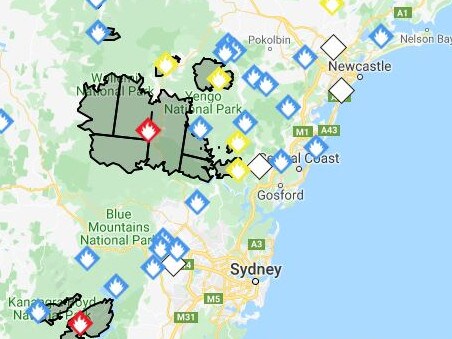
The Gospers Mountain fire, burning north west of Sydney, could merge with those around it. Picture: NSW RFS.Source:Supplied
SYDNEY’S “HORRIFYING” SUN
Sydneysiders have shared hundreds of images of yesterday’s eerie sunset, calling the darkened skyline “apocalyptic” and “horrifying”.
Yesterday, as thick smoke turned the sky a dark colour and the sun bright red, many took to social media to share photos of the unusual scenes.
“Horrifying today,” one social media user wrote of the conditions.
“Hope you can breathe,” another said.

Red sunset over Sydney. Picture: Owen MatthewsSource:Supplied

Sydney's new red trams and Sydney's new red sun. Picture: Benedict Brook.Source:Supplied
As smoke from bushfires in the Blue Mountains continues to waft over Sydney, the particles effect the light coming through from the sun appearing to turn it a deep shade of orange or even red.
Love doing laps in the Sydney sun! What we see here is completely normal! Doesn’t at all resemble the palette of a dread-inducing hellscape!
71 people are talking about this
See Tas's other Tweets
QUEENSLAND FIRES
There are reports homes have been lost on the Darling Downs close to Toowoomba where fire crews have been unable to beat back a large bushfire, reported the Courier Mail.
Severe fire warnings are in place for the state’s southeast.
“We’re not sure of the number of properties that we’ve lost,” Queensland Fire and Emergency Services Deputy Commissioner John Bolger told the ABC this morning.
Conditions are getting worse and any residents of Forest Ridge and nearby Cypress Gardens who remain have been told to leave immediately or follow their bushfire survival plan as 24 fire crews attempt to control the blaze.
“Fire crews are working to contain the fire, but firefighters may not be able to protect every property. You should not expect a firefighter at your door,” the state’s Rural Fire Service said on Thursday.

A house fire on the outskirts of Toowoomba. Picture: Kevin FarmerSource:News Regional Media

Air pollution in Sydney has been "hazardous" for weeks. Picture: SuppliedSource:Supplied
Severe #fire dangers forecast for southeastern districts today and into the weekend. Air quality is currently poor- very poor in Brisbane with #smoke, expected to continue into Saturday.
Fire weather warnings: ow.ly/M6yX50xs4ul
Air quality info: ow.ly/qvn450xs4r6
20 people are talking about this
Part of the Gore Highway has been closed between Cypress Gardens and the BP at Captains Mountain since Wednesday evening as the fire rages southwest of Millmerran, a town not far from Toowoomba.
An evacuation centre is now open at the Millmerran Showgrounds. A second significant fire is burning at Carneys Creek near the Queensland and New South Wales border, with people there being told to get ready to leave. Crews are fighting the fire on the ground and from the air.
‘LONGEST PERIOD’ OF AIR POLLUTION
South of the Tweed, fire danger ratings are “very high” as far south as the mid north coast and then a rung up at “severe” for the remainder of the coast including Sydney.
A total fire ban is in place for much of eastern NSW including populated areas.
Hot and windy conditions could stoke blazes. One hundred fires are burning across NSW, with 44 uncontained.

Flames from scattered bushfires around Katoomba in the Blue Mountains. Picture: Brett Hemmings/Getty Images.Source:Getty Images

The Three Sisters as smoke from scattered bushfires covers the horizon. Picture: Brett Hemmings/Getty Images.Source:Getty Images

The department's website shows hazardous air is settled throughout Sydney. Picture: SuppliedSource:Supplied
The appalling air pollution is set to continue with severe bushfire conditions across large chunks of the state.
The department says this season’s bushfire emergency has caused “some of the highest air pollution ever seen in NSW”.
Pollution levels are monitored by the NSW Department of Planning, Industry and Environment’s Air Quality Index. It measures several categories of particles. The one of most concern to public health is PM2.5.
Data and mapping from the department show PM2.5 levels have been above the 200 considered “hazardous” for weeks. In many cases the levels have been recorded above 600 in southern and western Sydney — where millions of people live.
This morning the AQI for the Central Coast had skyrocketed past 1000.
The Bureau of Meteorology says heavy smoke billowing from bushfires surrounding Sydney will linger in the city basin until Saturday.
Poor air quality has again been forecast for Sydney after hazardous levels of pollution were recorded in the east and southwest of the city on Wednesday. Heavy smoke has been blowing into the city from a large fire near Warragamba Dam near the Blue Mountains, the NSW Rural Fire Service says.
“An overnight temperature inversion will trap the smoke in the Sydney basin. This means smoke will settle in many areas and be very heavy,” the RFS said in a statement.

Smoke choking Sydney Harbour at dawn. Picture: John Grainger.Source:News Corp Australia

Eerie smoke diffused light over Bondi Beach. Picture: Christian GillesSource:News Corp Australia

A satellite image shows smoke over NSW. Picture: NASASource:Supplied
“Smoke is also affecting areas including the north coast, Central Coast, Hawkesbury, Wollondilly, Queanbeyan and Shoalhaven areas.”
The NSW environment department says this season’s bushfire emergency has caused “some of the highest air pollution ever seen in NSW”.
“Recently NSW has experienced elevated levels of pollutants as a result of smoke from the bushfire emergency and dust caused by the severe drought,” a spokesman said.
“NSW has experienced other periods of poor air quality that lasted several weeks, including the 1994 Sydney bushfires and the Black Christmas bushfires of December 2001 to January 2002.
“This event, however, is the longest and the most widespread in our records.”
Now, just wait for the claims Australia is headed for an Ice Age - lol!








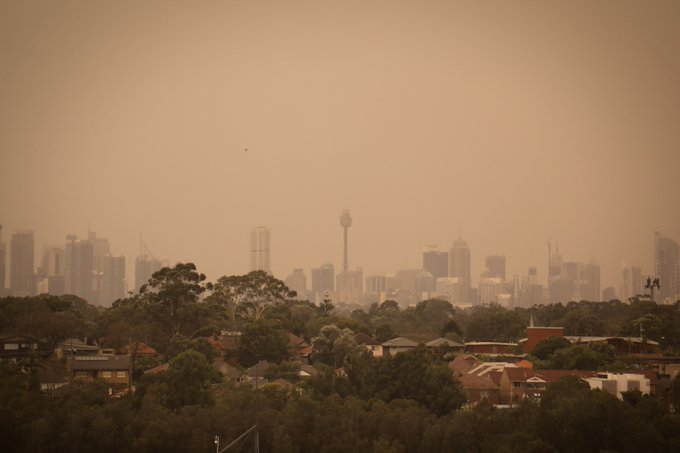
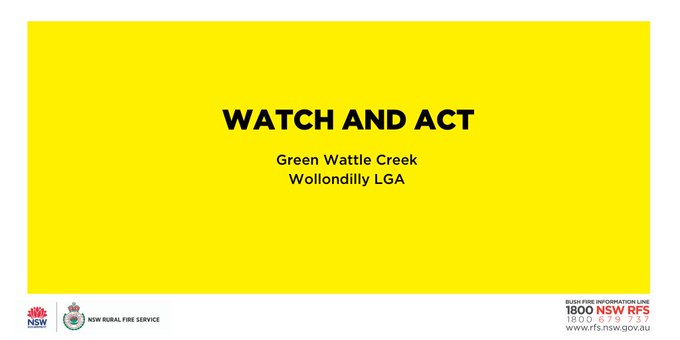
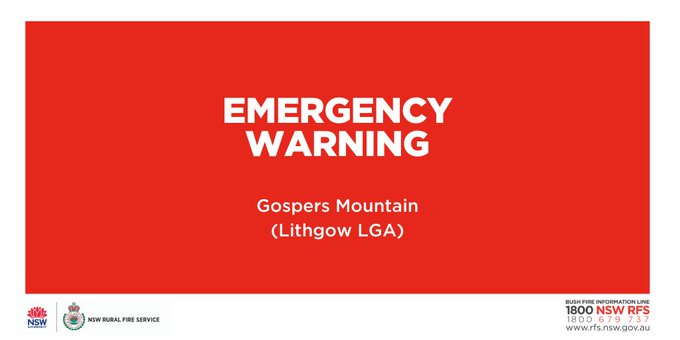

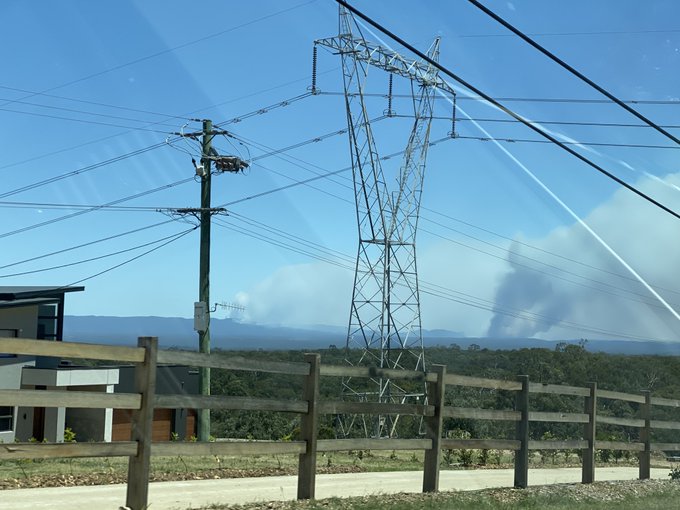




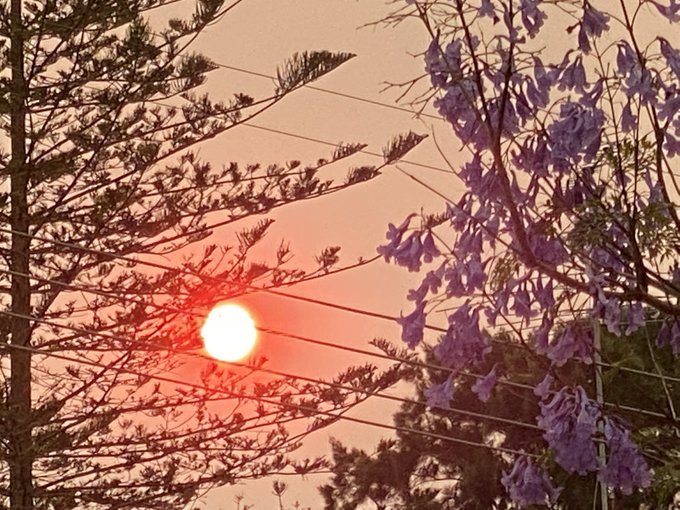

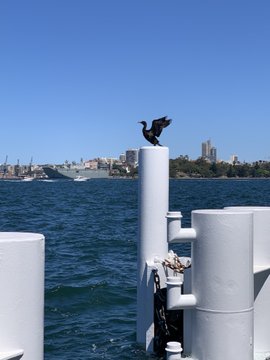
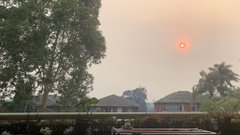

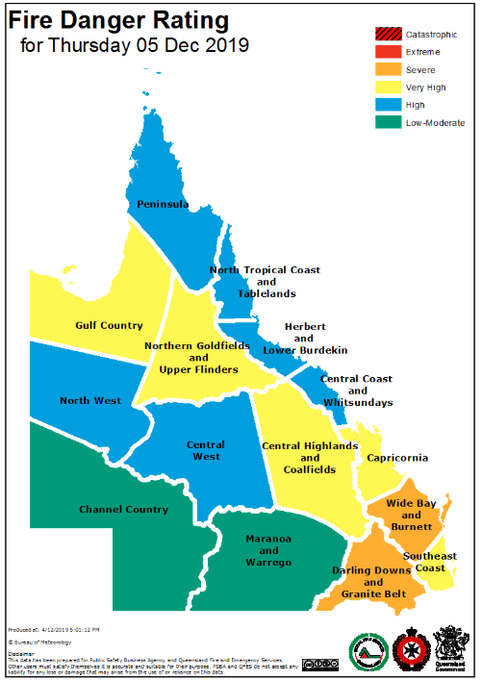





No comments:
Post a Comment
Note: only a member of this blog may post a comment.